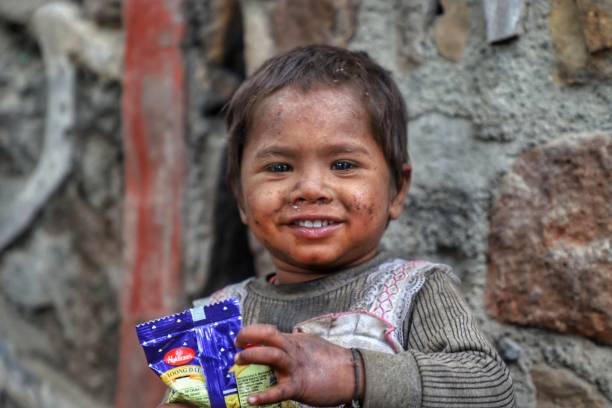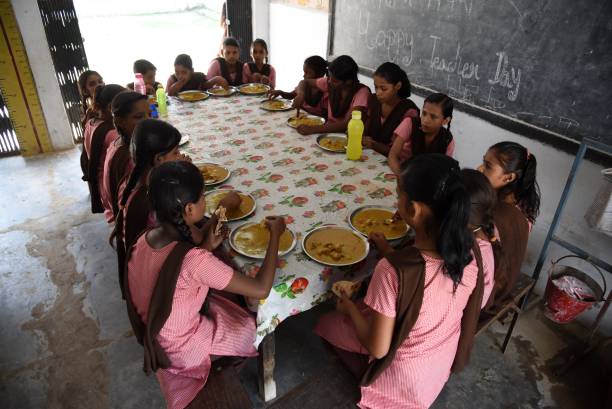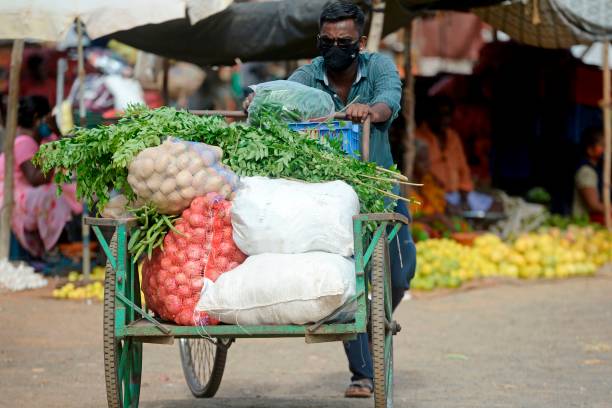
India is considered as one of the fastest-growing economies in the world, despite our ever-growing GDP, there is a mass inequality of wealth and a huge portion of our society lives in abject poverty. Food which is a basic human requirement for our survival is a luxury to some people in this country.
We often talk about the right to education but the most basic and vital thing; food and nutrition without which a human body cannot survive more than 4 days is nowhere the head concern. According to FAO estimation in its report on “The State of Food Security and Nutrition in the World 2019”, 194.4 million people were undernourished in India, which is about 14.5% of our population.
Right to food, hence, can be called as one of the most basic human rights for an individual and this right ensures the continuance of other essential rights. The Supreme Court of India has said that the Right to food is an important part of our constitution and falls under Article 21, which guarantees Right to life. Besides, Article 47 talks about the duty of the state to raise the level of nutrition and standard of living and improve public health. Despite various court run programs, welfare schemes and the enactment of the National Food Security Act, there are major concerns regarding the implementation of these promises.
Right to Food and Legal Obligations of States
Right to food is a human right, recognized under national and international law, as a concept it aims to liberalise the world from hunger and malnutrition and provide everyone with a life of dignity where each person has the capacity to feed themselves. The three main components of the Right to food are – Three A’s; availability, adequacy and accessibility.

Government plays a major role in protecting, respecting and fulfilling these elements. Furthermore, it is the duty of every country to ensure that they maximize their current resources to fully realize the right to adequate food. States must identify disadvantaged and marginalized groups and take actions to reduce their vulnerability. According to the International Covenant on Economic, Social and Cultural Rights, there is a recognized, “right to an adequate standard of living, including adequate food” and “fundamental right to be free from hunger”.
There is a common misconception that right to food means handing out free food to the underprivileged, whereas it is about having the right to feed oneself, where the food is easily available through sufficient production and can be easily accessible to the public, such that each household has enough means to either produce or buy their own food. The right to food does not include the right to be fed. However, if somehow the citizens are deprived of their rightful access to food beyond human control, for instance, during a natural disaster or an armed conflict, then it is the duty of the state to provide them with sufficient food for their survival.
Learnings from Right to Food Case
In 2001, 47 starvation deaths had occurred in the South-Eastern region of Rajasthan as the state was struggling through its third consecutive year of drought. This happened despite an excess of food grains being kept in warehouses for the announcement of official famine. Weeks later, People’s
Union for Civil Liberties moved to the apex court for the enforcement of the famine code and other various food security measures. Various interim orders were passed over a period of two years but they were never implemented as per directions of the court. In 2003, court lashed out at the state and central government over the failure of the implementation of these schemes and said that their acts were directly resulting in the abuse of the right to life, which is a fundamental right under Article 21.

The court subsequently ordered the implementation of the famine code for three months, doubled the grain allocation for the food for work scheme, ordered the ration shops to provide food to families below the poverty line at a set price and directed the state governments to provide nutritious, cooked mid-day meal to school-going children. This case played a significant role in starting a nationwide movement and discussion for implementation of different food schemes and became the most cited case on Right to food and judicial activism.
The groundwork was laid in making the right to food a part of the fundamental right under Article 21 and building an infrastructure for enforcing the court’s decisions. However, this case abruptly came to an end after the passing of the National Food Security Act, 2013 and the Supreme Court keeping the new act in view said nothing of relevance survived in the petition and this marked the end of the case which lasted almost two decades and issued the longest-running mandamuses (A judicial writ where a court orders an entity or a person to perform a public or statutory duty) in the world on the Right to Food campaign. The right to food case is a historic case with respect to public litigation as the petitioner wasn’t a person but a whole movement.
Conclusion
It has been 7 years since the implementation of the National Food Security Act and its promise to provide subsidized food grains to two-thirds of India’s population still remains a utopian dream. Supreme Court in 2017 said that it was a “pity” that legislation which directly benefitted the citizens was kept on a “back burner” by various states. Supreme Court also pointed out that how states such as Madhya Pradesh, Andhra Pradesh and Haryana don’t yet have an established State Food Commission. India ranked 102nd in the Global Hunger Index, 2019 out of 117 countries. It was the lowest-ranked among the South-Asian Countries and lagged way behind the BRICS nations. Indias score out of 100 was 30.3 which put it in a “serious hunger” category. Despite spending crores and crores in different government schemes and programmes there are no visible changes on the ground. A significant portion of our society still suffers from the evils of malnourishment and extreme hunger. Sadly, India is home to the maximum number of malnourished children in the world and the reason behind this is the corruption that blatantly flows through the veins of these schemes. A lot of work needs to be done by both the central and the state government in pulling India out of the pangs of extreme hunger and starvation.